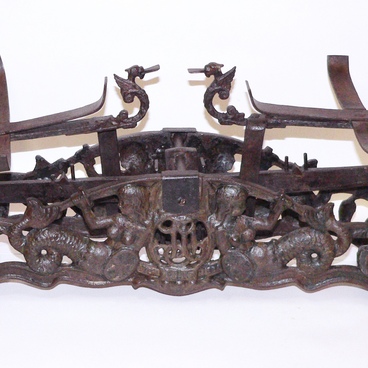The medal ‘For Bravery’ is one of the awards of the state of the Russian Empire. There were several types of medals with such an inscription. Established in 1807, the medal was intended to be awarded to the soldiers of irregular troops and paramilitaries. In 1878, Emperor Alexander II instituted a separate award with the inscription ‘For Bravery’ to reward the lower ranks of the border guard.
However, more famous was the St. George Medal, awarded at four levels, with the inscription ‘For Bravery’, which was established on August 10, 1913 and minted from 1913 to 1917. It was awarded to servicemen from the lower ranks of the Russian army who showed courage both in peace and in combat. During the First World War, the St. George Medal, along with the St. George Cross, became the most ubiquitous award for the lower ranks of the Russian Imperial Army.
The institution of the St. George Medal nullified the earlier regulations on the medal with the inscription ‘For Bravery’. Until this point, the medal ‘For Bravery’ in wartime was awarded to persons who did not have class ranks - for feats performed in a combat situation and under enemy fire. These persons included the lower ranks of the border guards and employees of the Red Cross - nurses, orderlies and others, as well as civilian volunteers. The winners of the award were entitled to a cash payment, which was made once a year. In the event of the death of the owner of the medal, his or her relatives could receive this payment, but only once.
The medal ‘For Bravery’ presented in this exposition has no number and degree, and it is not made of precious metal - this was confirmed by the authentication that was carried out in Leningrad in 1990. There may be several explanations for this. For example, if the original was lost, the medal ‘For Bravery’ could be ordered from a private manufacturer without a number designation. In addition, during the First World War, a soldier could participate in a charity event to help the front, exchanging his silver awards for duplicates from other metals. The exchange of precious metals for cheaper ones was a common practice in European states during the First World War.
However, more famous was the St. George Medal, awarded at four levels, with the inscription ‘For Bravery’, which was established on August 10, 1913 and minted from 1913 to 1917. It was awarded to servicemen from the lower ranks of the Russian army who showed courage both in peace and in combat. During the First World War, the St. George Medal, along with the St. George Cross, became the most ubiquitous award for the lower ranks of the Russian Imperial Army.
The institution of the St. George Medal nullified the earlier regulations on the medal with the inscription ‘For Bravery’. Until this point, the medal ‘For Bravery’ in wartime was awarded to persons who did not have class ranks - for feats performed in a combat situation and under enemy fire. These persons included the lower ranks of the border guards and employees of the Red Cross - nurses, orderlies and others, as well as civilian volunteers. The winners of the award were entitled to a cash payment, which was made once a year. In the event of the death of the owner of the medal, his or her relatives could receive this payment, but only once.
The medal ‘For Bravery’ presented in this exposition has no number and degree, and it is not made of precious metal - this was confirmed by the authentication that was carried out in Leningrad in 1990. There may be several explanations for this. For example, if the original was lost, the medal ‘For Bravery’ could be ordered from a private manufacturer without a number designation. In addition, during the First World War, a soldier could participate in a charity event to help the front, exchanging his silver awards for duplicates from other metals. The exchange of precious metals for cheaper ones was a common practice in European states during the First World War.

